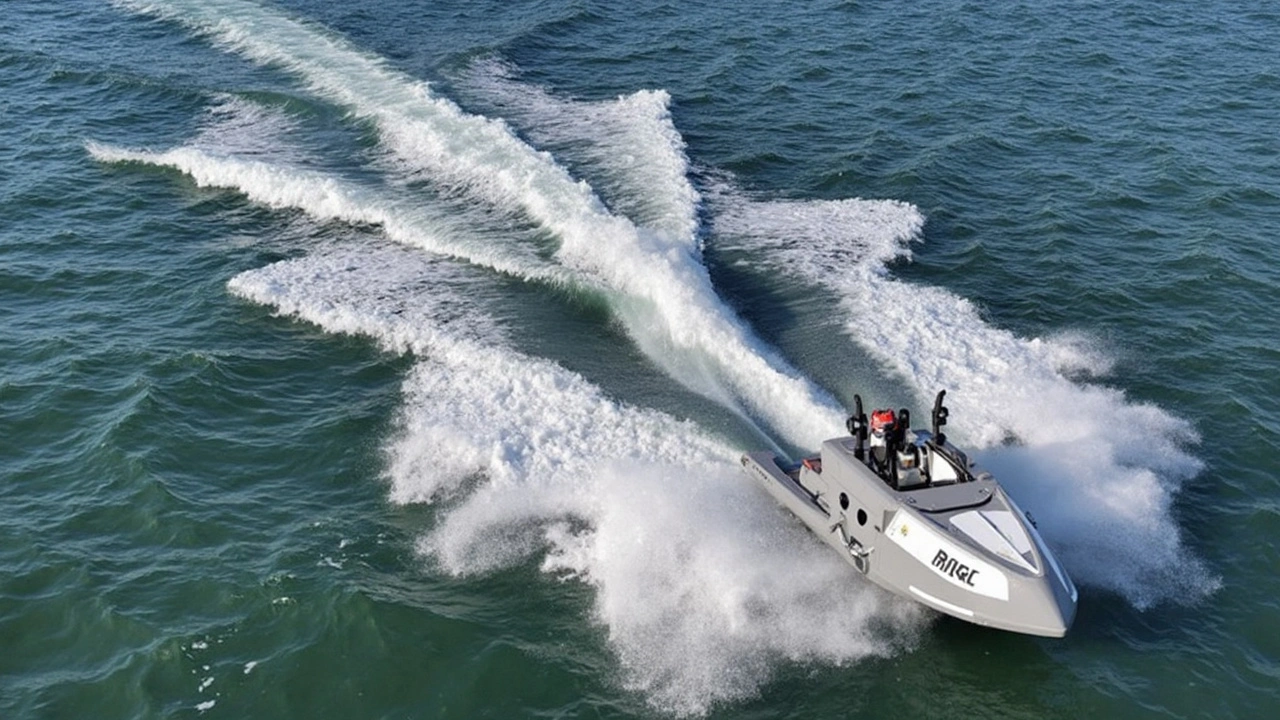- Raila Odinga backs Ruto govt, sparks doubts over 2027 presidential run Oct 7, 2025
- Malema-Shivambu Fallout Casts Shadow Over EFF's Future Leadership Aug 16, 2024
- U.S. Army Delegates One-Star Generals for New Recruiting Hubs in Key Cities Nov 27, 2024
- Vinicius Junior Emerges as Top Contender for 2024 Ballon d'Or Post Real Madrid's Champions League Triumph Jun 2, 2024
- NYSC DG Unveils New N77,000 Corps Member Monthly Stipend in a Bid to Boost Youth Empowerment Feb 1, 2025
Maritime warfare: what it is and why it matters
Maritime warfare covers military action at sea: ships, submarines, aircraft, missiles, drones, and the rules and tactics states use to control sea lanes. It’s not just big battleships clashing. It includes blockades, mine warfare, anti-piracy patrols, and the cyber attacks that can knock out a port’s systems.
Why should you care? Seas carry most of the world’s trade and energy. Any disruption—pirates off the Gulf of Guinea, a naval standoff at a chokepoint, or a cyber hit on a port—can raise prices, slow trade and affect everyday life on land.
Key elements of modern maritime warfare
First, control of sea lanes. Nations try to keep shipping routes open or deny them to an enemy. Second, intelligence and surveillance. Satellites, maritime patrol aircraft, and drones now spot threats far faster than before. Third, weapons and countermeasures: anti-ship missiles, torpedoes, mines, and increasingly, electronic warfare and cyber tools aimed at navigation and communications.
Fourth, logistics and ports. Landing troops or keeping a fleet supplied depends on secure ports and supply chains. Fifth, law and rules at sea. International law, like UNCLOS, and rules of engagement shape what militaries can do and how neutral ships are treated.
Common threats and where they show up
Piracy and armed robbery remain real threats—especially in parts of West and East Africa. The Gulf of Guinea had major incidents in recent years. State rivalry also plays out at sea: patrols, blockades, and shows of force near disputed waters. Submarine activity and long-range missiles raise the stakes, and cyber attacks on port systems are an emerging risk.
Hybrid tactics are common: private armed guards on ships, state-backed militias, and mercenary groups can blur lines. That makes verification and timely reporting essential.
What to watch for in the news: changes in naval patrols, new bilateral or regional agreements, reports of sea mines or blockades, and notices to mariners. Industry warnings and insurance rate changes often signal rising risk before major headlines appear.
How can ships and coastal states respond? Better information sharing, investment in patrols and coast guards, use of escorts in high-risk zones, and stronger cybersecurity for ports. Training for crews on reporting and avoidance is low-cost and effective.
Looking for updates about maritime warfare in Africa or worldwide? Use this tag page to follow stories, expert analysis, and incident reports on African EduNews Tree. Bookmark the page, check notices to mariners, and sign up for alerts if you need timely updates.
Want a quick checklist: 1) Track official maritime warnings; 2) Note changes to shipping lanes or escorts; 3) Follow regional security cooperation announcements; 4) Watch for cyber incidents hitting ports. These signs help you spot rising maritime risks early.
Maritime warfare affects trade, security and daily life far ashore. Staying informed, knowing the signs, and supporting practical defenses are the best ways to reduce risk and understand what each new headline means.
UK’s MARS Drone Boat Breaks Cover: The Fast-Tracked Revolution in Naval Warfare
- Katlego Sean Mahaye
- May 7, 2025
British firm SubSea Craft has unveiled the MARS USV—a highly adaptive, multi-mission drone boat built in just 100 days. Geared for naval warfare, it uses advanced sensors, supports UAV launches, and handles resupply missions autonomously, marking a leap in unmanned maritime defense.
